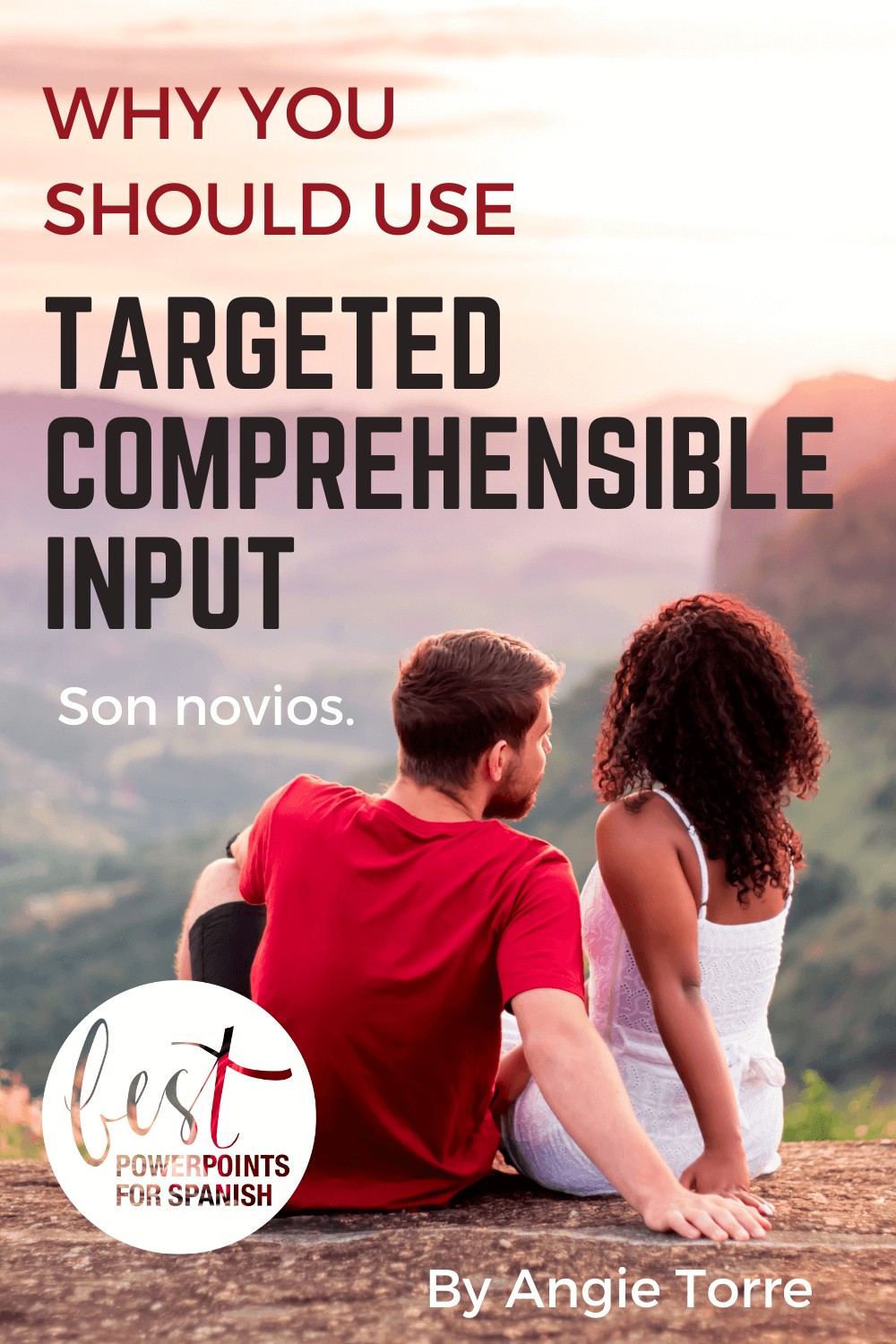Why You Should Use Targeted Comprehensible Input
If you love using TPRS Stories or comprehensible input, have you asked yourself, “Do I plan my lesson around the story or plan the story around the lesson?” It depends on if you use targeted or non-targeted comprehensible input.
Targeted comprehensible input is the presentation and recycling of selected vocabulary or grammar, in the form of stories, questions, and auditory, written, or visual clues with the purpose of providing an abundance of repetition in context. Non-targeted input does not focus on any particular vocabulary or structures but rather uses any language necessary to convey the message. Both targeted and non-targeted have the goal of focusing on A MESSAGE AND COMMUNICATION, rather than grammar.
Those who argue that input should be non-targeted do not take into account the limited amount of time a junior high or high school student is exposed to the language.
If world language instruction began in elementary and continued until 12th grade, non-targeted input would be feasible and efficacious. However, in the typical high school classroom, there is simply not enough instructional time for students to acquire the language presented with non-targeted input. Thousands more hours would be needed to assimilate the different vocabulary and structures.
So why should you use targeted input? For the following reasons: It is comprehensible, provides interesting repetition in context and additional connecting words and syntax, focuses on the message and communication, easily provides L+1, and facilitates teacher planning around themes and function. It also advances students to the proficiency level that allows them to understand authentic language and resources. The FREE video below provides all that and engages students as well.
Click here to get a FREE Video with many uses of the Subjunctive and Present Progressive.
Of course, the most important component of comprehensible input is that it be COMPREHENSIBLE. That means, through whatever means, gestures, visuals, cognates, contextual clues, or any of a number of comprehensible input strategies, students understand the message. For this to occur, the language must be only slightly above their understanding.
If I wanted to teach the verb, “ser”, for example, telling a story using random vocabulary, I would have to spend months or even years to provide enough uses of the verb for my students to acquire it. If I purposely sprinkle an abundance of the word in an engrossing story and then repeat the verb in multiple questions and other activities, it will soon be part of students’ working vocabulary.
This SER TPR Story does just that.
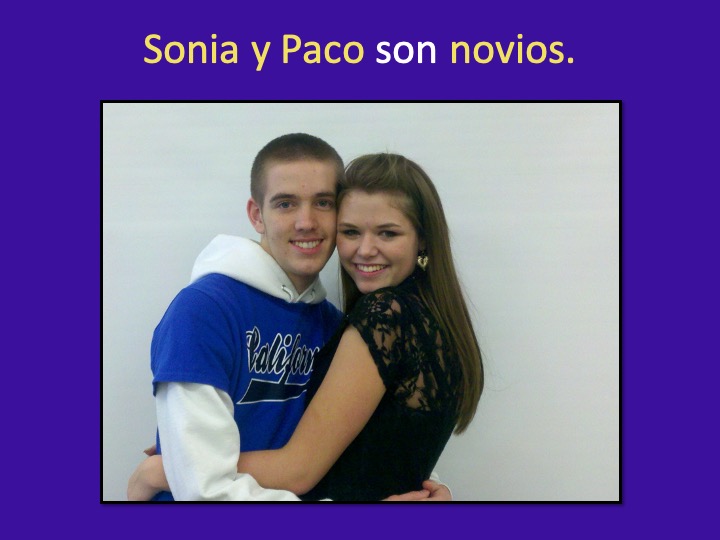
My students loved this story about a girl who meets a great guy but has to overcome obstacles in order to go out with him: Spanish Subjunctive TPR Story
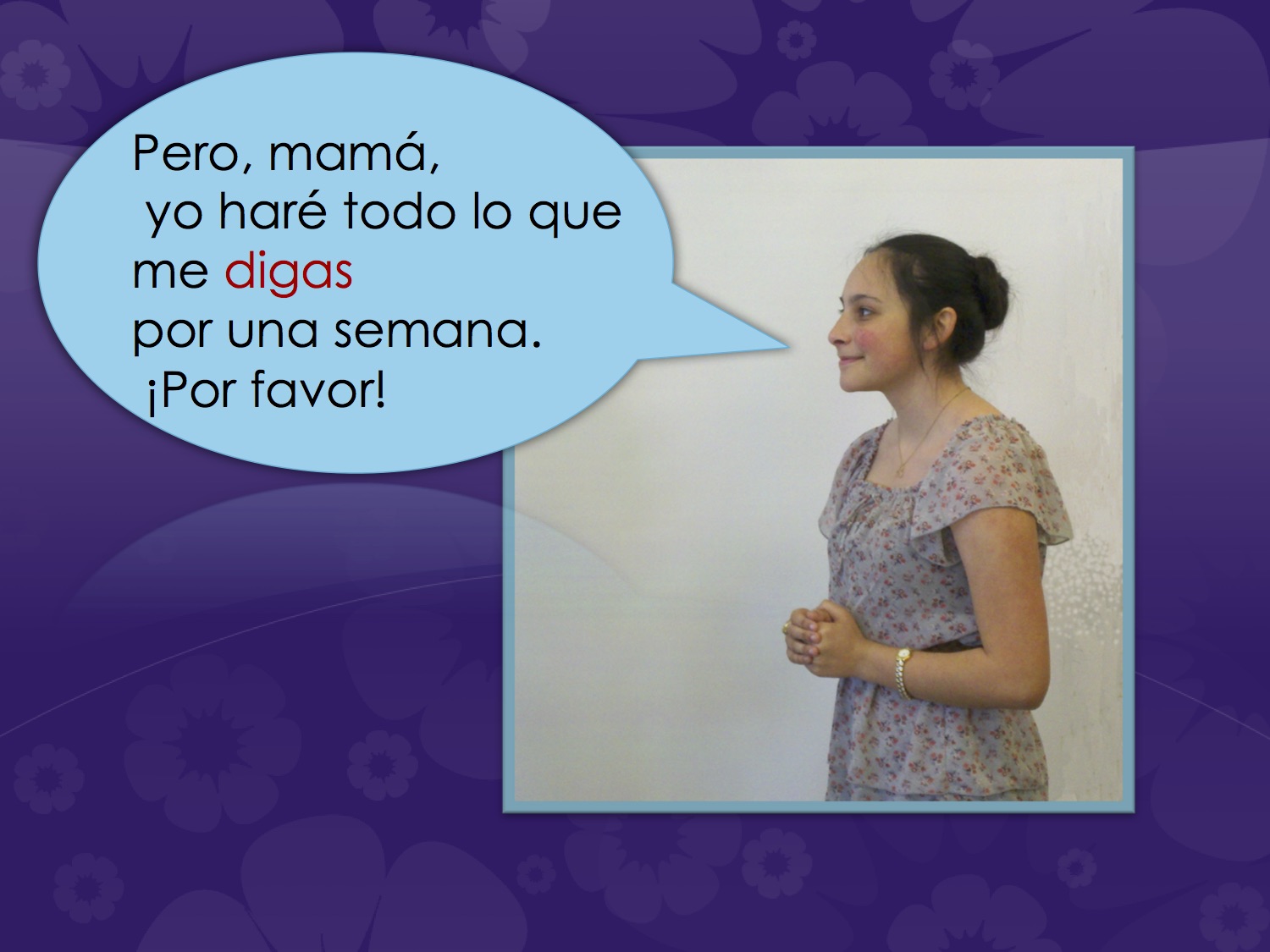
Once they heard the subjunctive used multiple times in context, they began to replicate what they heard and produce complete sentences, answer questions, put events in order, write their own ending, and, ultimately, communicate original messages.
Although it is basically true that we learn a second language the way we learn our first one, age is a limiting factor.
After puberty, students do not acquire a second language as easily, quickly, or automatically as children. They also have a curiosity about and a capacity to understand the formal teaching of structures. Although that teaching may not help acquisition it may boost students’ confidence.
For these reasons, I teach the conscious mind first, then the subconscious. After formally teaching the grammar, I repeat the structures multitudinous times in context, with meaningful messages so that students then ACQUIRE the language and syntax. I make the communication as authentic and interactive as possible because language is also learned through interaction. So- here’s the rule, now let’s internalize it through exposure and real communication.
Another benefit of targeted comprehensible input is that students learn more than the selected concept or vocabulary. They also learn connecting words, syntax, high-frequency words, and expressions not formally taught. Many of the expressions my students use are not ones on their handout, but rather ones they hear me say repeatedly. ¡Caramba! ¿Otra vez?
Discussion of the story naturally leads to the discussion of other related topics or themes that expose the students to the repetition of the same structure. For example, I told students about a problem I had when I was in college and asked them to give me suggestions. I gave them the sentence stems: I recommend that you… I suggest that you…. I advise you to… It’s important that you…
After they gave me their suggestions, I told them what I really did. It was real. It was authentic. And they were using the structure that had burned into their brains after hearing and talking about the story.
For homework, I gave them more scenarios and asked for more recommendations, suggestions, etc.
Lastly, if the targeted input is interesting to the students, they will be so curious about what is going to happen next, or so captivated by the topic they will almost forget they are not speaking their own language.
Sheltered videos have become my favorite resource in the world language classroom. They are the best targeted comprehensible input, in my opinion, for these reasons: Students are 100% engaged because the resource is visual and the story or topic hooks their interest; the teacher can monitor the students as they learn instead of doing a song-and-dance; students absorb the language almost automatically in a simulated authentic experience; they provide tons of repetition in context with slow-speaking native speakers; and students learn surrounding language, connecting words, and syntax not formally taught as they focus on the message, not grammar.
Here are some examples of some sheltered videos:
My students were mesmerized by these videos (Click on photos to see previews):
La ropa y los colores Video for Comprensible Input
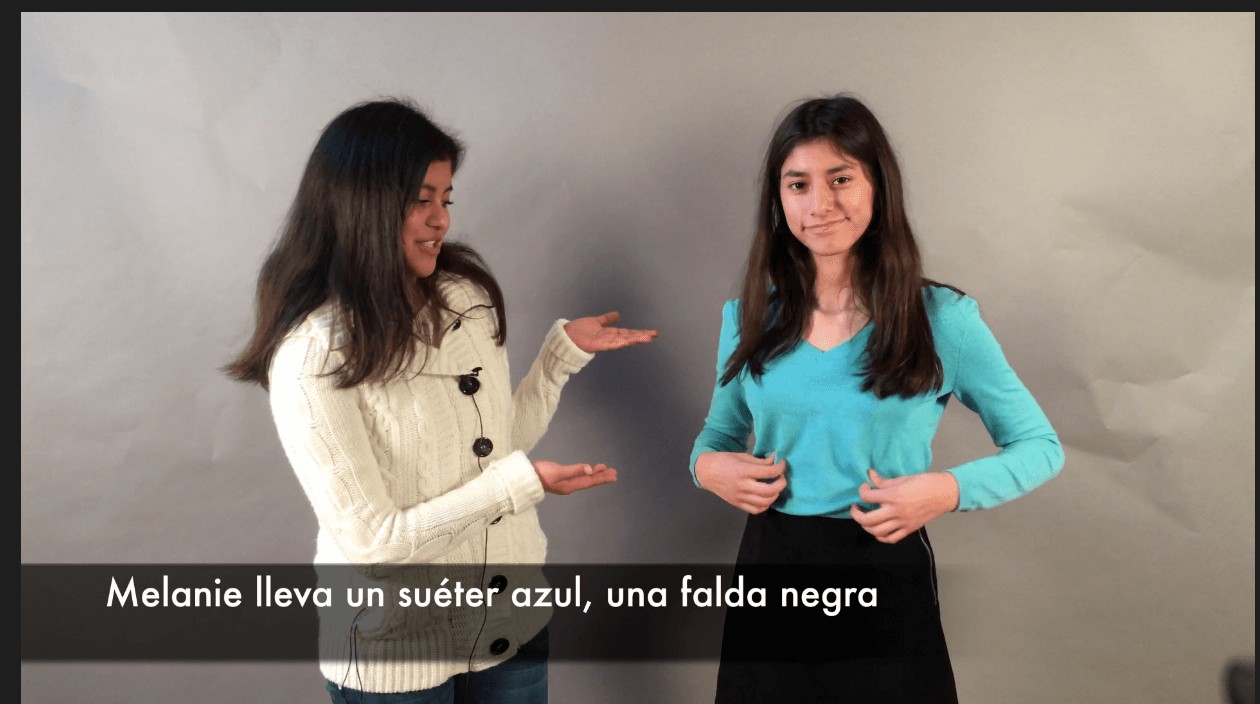
La hora y las clases Video

El subjuntivo: Las cláusulas ajetivales
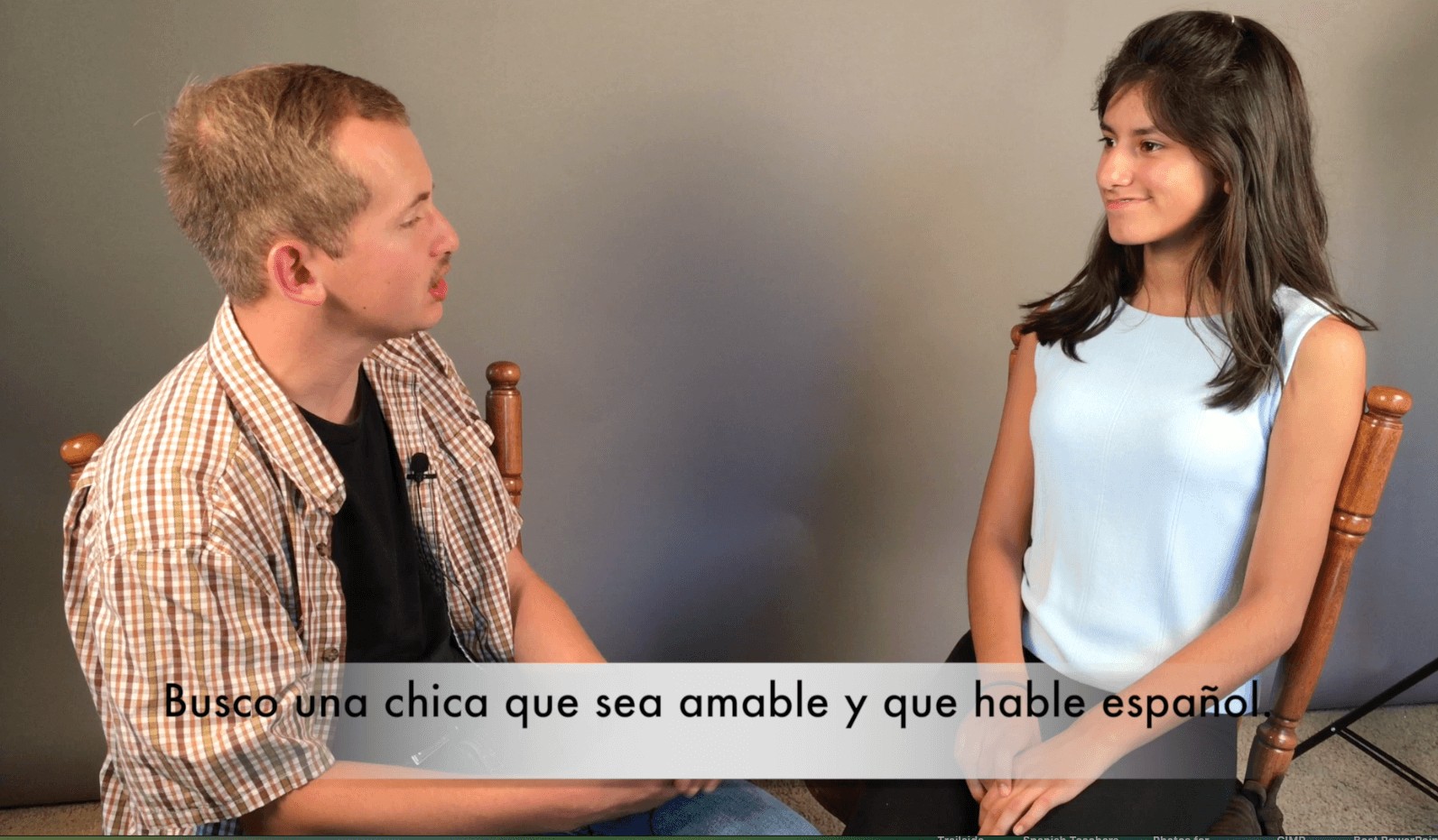
El presente del subjunctivo: Jessica tells Rodrigo what he has to do before she’ll consider marrying him.
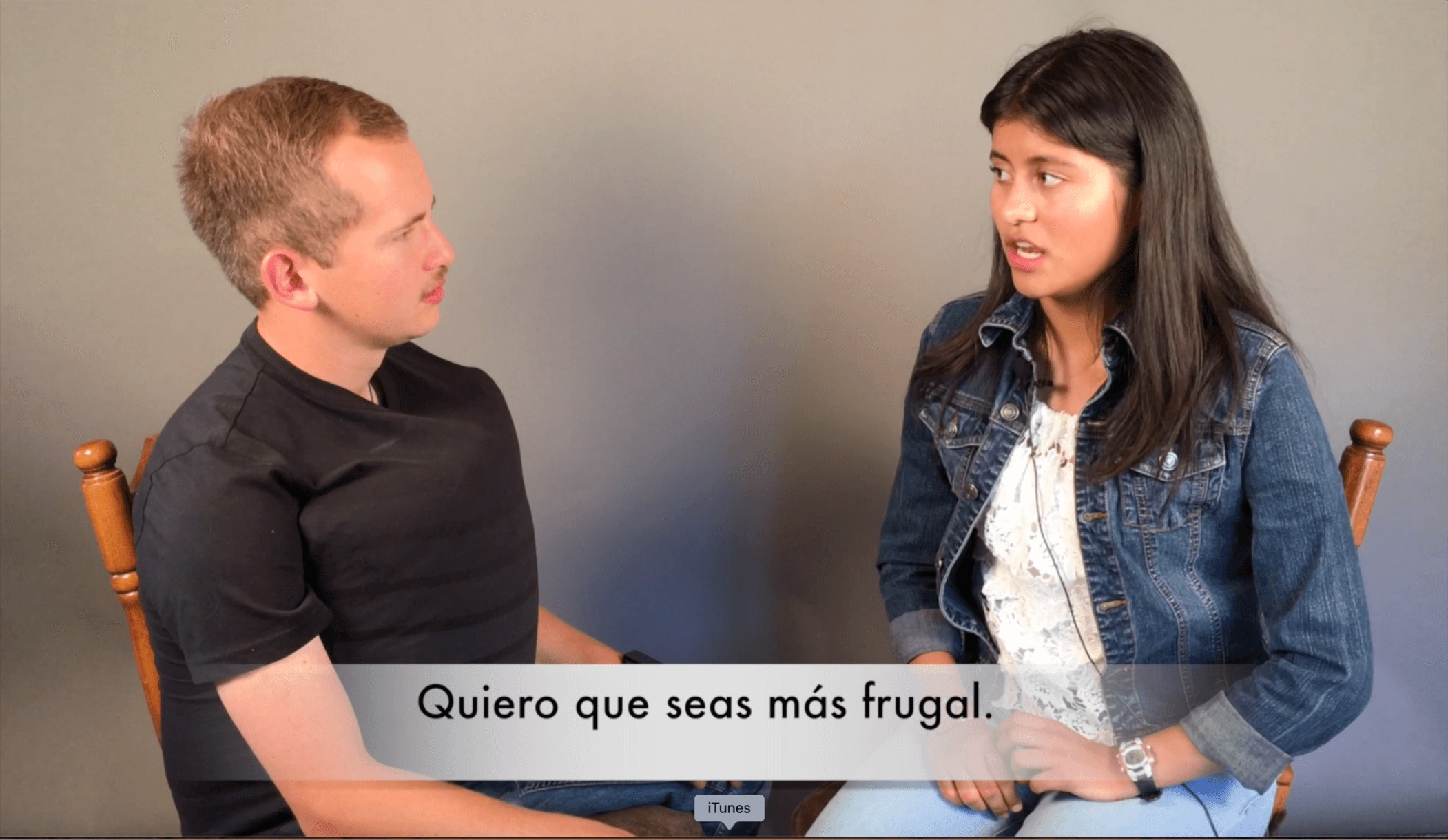
CLick here to get your FREE Video with many uses of the Subjunctive and Present Progressive.
Below is the video for Saber vs. Conocer

Students learn how to describe people in the Descriptive Adjectives Video below.
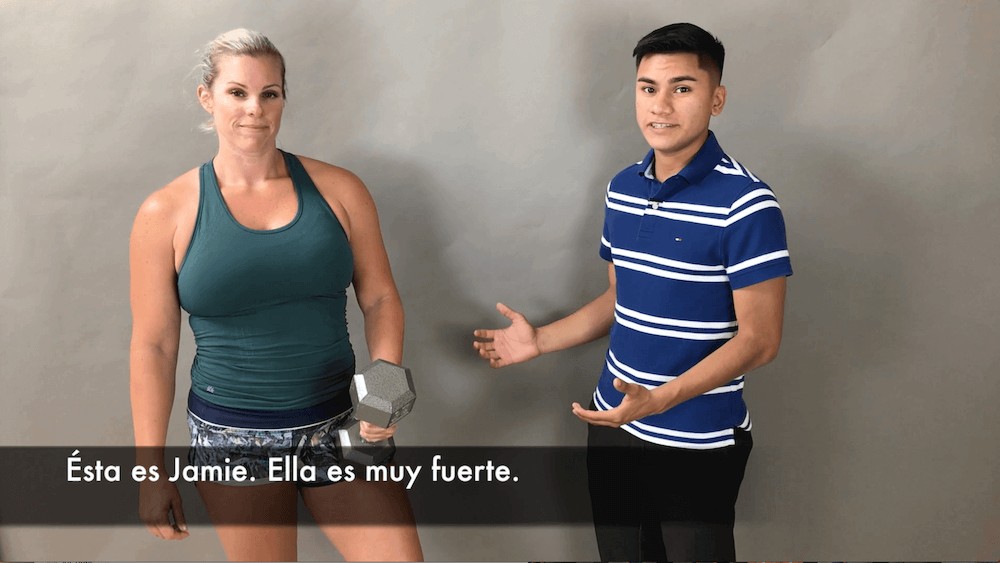
Another helpful blog that explains targeted comprehensible input is, What is Targeted Input? , by Terry Waltz.
Stay tuned. Next time we will talk about how to start the school year and set up your classroom. After that, we will continue the discussion on how to motivate unmotivated learners.
If you would like to receive these teaching tips in your email, subscribe to our mailing list.
Here is another excellent blog about strategies for acquiring language:
What Everyone Should Know about Comprehensible Input
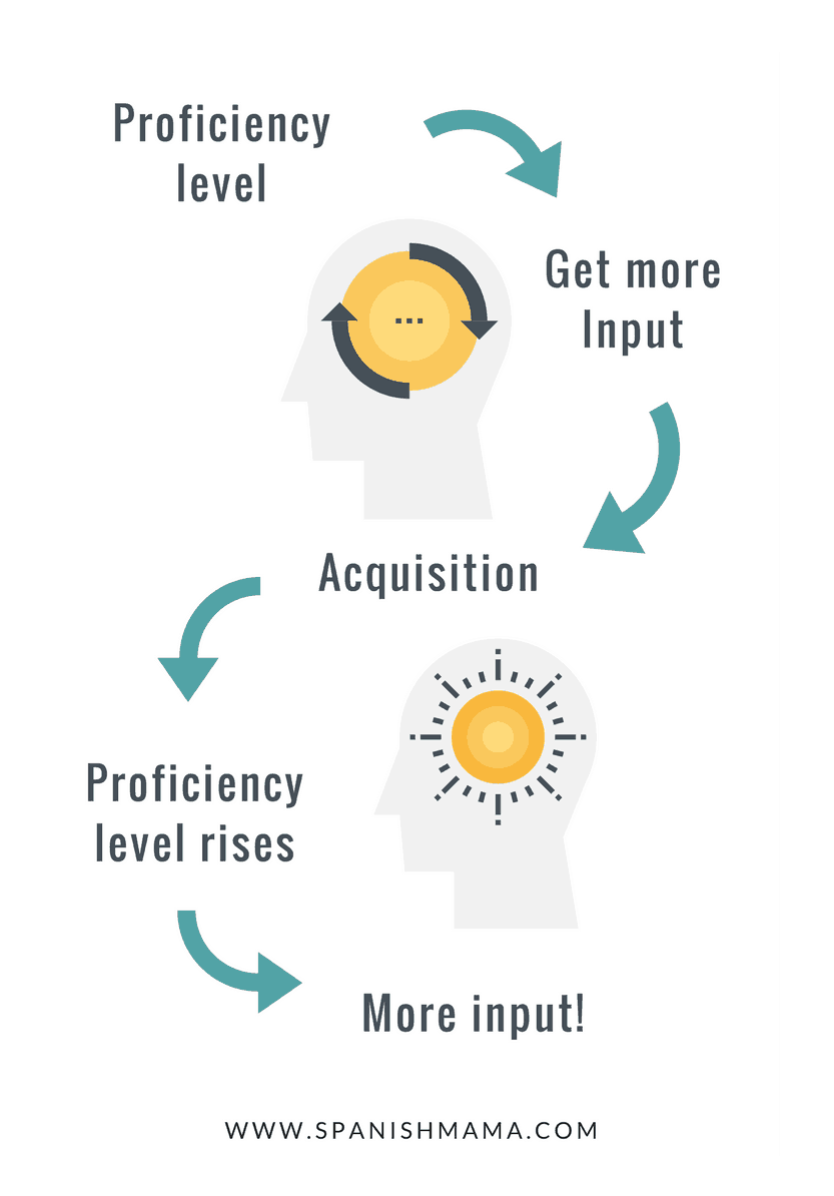
Comprehensible input strategies do not have to be random, and sometimes it’s even difficult NOT to target certain vocabulary or structures. Any time world language teachers choose a topic for discussion, they are targeting words and phrases that must be used when discussing that topic. How will you NOT say, “J’ai faim,” or “Tengo hambre” when discussing food?
Of course, grammar will always be the sticking point but, because of time, I still believe in targeting, especially if you can do so in a compelling manner.
Speaking of grammar, have you tried presenting conjugations using word problems? If you would like to learn how to do so, or would like a list of ready-made, free word problems, click on the following link: Spanish Conjugations: How to Make it Fun with Word Problems
Don’t miss out on freebies! Make sure to follow my STORE in order to get notified of updates on products, free resources, and new products. Happy teaching!
If you would like to receive these blog posts with teaching tips and freebies in your email, subscribe to my monthly newsletter. Click on the following link: Best PowerPoints and More for Spanish and French, scroll down to the bottom and click, “Sign up.”

